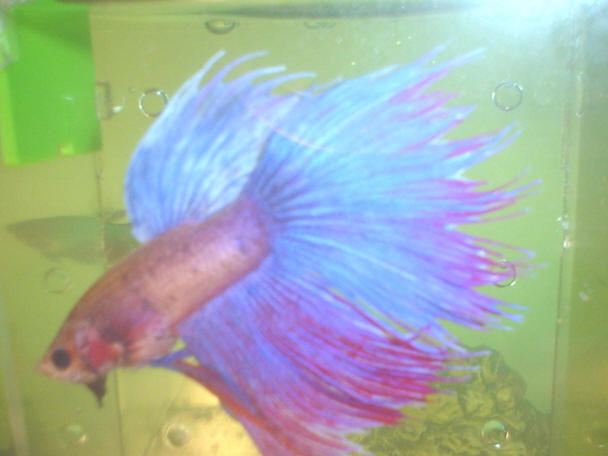
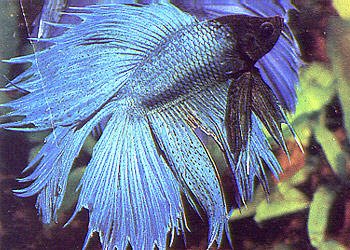
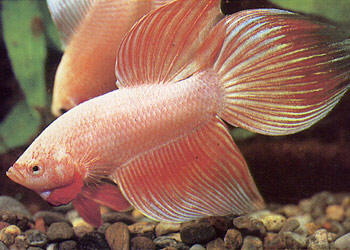
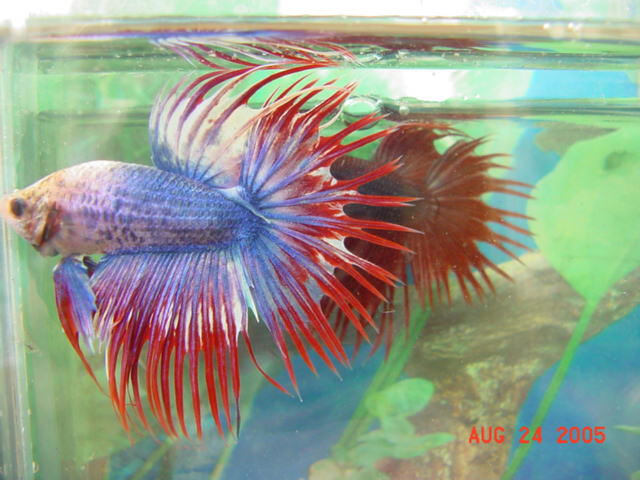
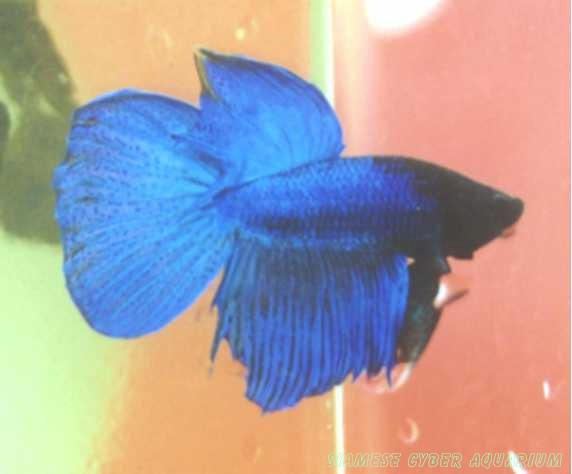
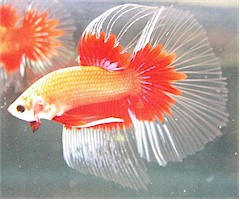

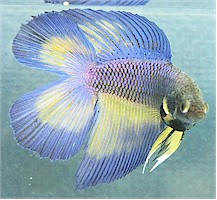

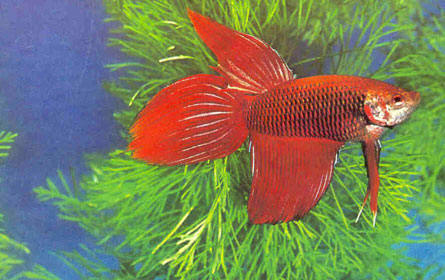
|
Description:
Betta Splendens, the Siamese fighting fish, more commonly known simply as a "Betta," is a small colourful fish that originated in Thailand. Males have elongated fins to attract females. The male has long colorful fins, while the females have shorter fins and are not as colorful. They vary in size and shape. The short-fin fish are categorized by color and color combinations, such as the solid color, the bi-color, and the multi-color combinations, such as the solid color, the bi-color, and the multi-color. The long-fin fish are categorized by the shape of the tail, such as delta, paddle, and half-full tail.
History:
In Thailand, the fish has been raised in households since the Sukhothai Period, more than 700 years ago. Records from the reign of King Lithai of Sukhothai allude to fighting fish being reared for sport. In 1840, the King of Siam presented several of his prized fighting fish to a friend of Theodor Cantor, and he, in turn, gave them to Cantor, a doctor in the Bengal Medical Service. Although these fish were more colorful than their earlier counterparts, their predominant colors of olive green, black and red still left much to be desired. The fin lengths also varied from specimen to specimen. In 1849, Cantor published an article on the fighting fish he called Macropodus pugnax, var. It was not until 1909 that C. Tate Regan re-examined this and noted that pugnax was already a distinct species. Since the fish had no scientific name, Regan named it Betta splendens, according to Gene Wolfsheimer, author of Enjoy the Fighting Fish of Siam.
Habitat/Care:
To fully understand their needs it is important to become familiar with their native habitat. Bettas originate in the shallow waters in Thailand (formerly called Siam, hence their name), Indonesia, Malaysia, Vietnam, and parts of China. They proliferate rice paddies, shallow ponds, and even slow moving streams. Although many fish keepers are aware that Bettas come from shallow waters, a key factor that is often overlooked is the water temperature. These countries are tropical, which means the water temperature is quite warm - often reaching into the 80's. Bettas thrive on heat, and will become increasingly listless when the water temperature falls below 75 degrees F. Water temperature is perhaps the biggest argument against keeping a betta in a tiny bowl (which cannot readily be heat controlled). An organ called a labyrinth allows bettas to breathe air from the water surface, thus permitting them to live in water with low oxygen levels. Because of this ability aquarists often keep bettas in small containers, but ideally a 3-gallon filtered tank or more is better and allows the bettas to stretch their fins. Even though Bettas do well in waters low in dissolved oxygen, that does not mean they require less oxygen than other fish. Studies have shown the betta that are denied access to the water surface to breathe died even though the water is contains high levels of oxygen. Therefore, betta must have access to the water surface to breath air directly from the atmosphere Optimally the water for keeping healthy Bettas should be soft, warm, with a neutral to slightly acidic pH. Water movement should be kept to a minimum, which means that power filters and powerheads are not suitable. Bettas may be kept in a community tank as long as the water conditions are met, and if no aggressive or fin-nipping fish are present. However, only one male may be kept in each aquarium, unless they are separated by a barrier.
Mixing with other fishes:
Males must not be kept together, otherwise they will fight - sometimes to the death. Females can be kept together, but can be territorial. This is often a difficult fish to mix in a community tank. Many fish will nip on the long flowing fins, even some species which do not usually fin-nip. On the other hand, some bettas can be aggressive to fish they see as rivals (such as male guppies with their fancy tails).
Diet:
In nature Bettas subsist almost exclusively on insects and insect larvae. They are built with an upturned mouth that is well suited to snatching any hapless insect that might fall into the water. Internally their digestive system is geared for meat, having a much shorter alimentary track than vegetarian fish. For this reason, live foods are the ideal diet for the betta, however they will adapt to eating flake foods and frozen and freeze dried foods. Brine shrimp, Daphnia, plankton, tubifex, glassworms, and beef heart, are all excellent options that may be found frozen or freeze dried. If flake food is fed, it should be supplemented with frozen and freeze-dried foods, and if possible live foods. |
Breeding:
Bettas have a fairly short lifespan, and are most successful as breeders when they under a year old (bettas in pet shops are usually at least six months old). They breed in bubblenests and do not require a large tank or special equipment. Most breeders find that a bare bottomed tank of roughly ten gallons works well, although smaller tanks are also suitable. Ideally the fish should be conditioned prior to breeding, by feeding them a diet of live foods. The water should be at a pH of about 7.0, and temperature around 80 or slightly above. The male will blow an elaborate bubble nest when he is ready to spawn. The female should be provided with a hiding place, as males may become aggressive during courtship. Even with a hiding place, it is common for the female to lose a few scales or have their fins frayed during spawning. When they are ready to spawn, the pair will display intense coloration and begin circling each other under the bubblenest. The male will wrap himself around the female who has turned on her back. As she expels the eggs, they are fertilized and begin to sink. The male will scoop up the eggs and spit them into the nest. From this point on the male will tend the brood. It is advisable to remove the female, as the male may become aggressive towards her as he tends his young. The male will continue to tend the bubblenest, spitting eggs that fall out back into the nest. In one to two days the eggs will hatch, and the fry will be visible hanging in the bubblenest with their tails pointing downward. They will feed off their yolk sack for another thirty six hours, during which time the male will continue to pick up any fry that fall out of the nest. The male should be removed within two days after the fry hatch, as they may eat the young once they are free swimming. The fry should be fed a couple of feedings daily of baby brine shrimp or very fine baby food. Tetra makes a dry mixture specifically for egglaying fish, and many pet shops carry frozen baby brine shrimp. Take care not to overfeed, as the uneaten food will foul the water and can quickly prove lethal to the fry. Disease:Remember that bettas are not big eaters and it is very easy to overfeed. Since fish have to eat and produce waste as a result of eating, water changes are a must, and there is no exception when it comes to bettas. In fact, since a lot of bettas are kept in small containers that don't have some sort of filtration, water changes are even more important and need to be done every 2 or 3 days to prevent toxic build up. When doing water changes it is very important to move any uneaten food or waste that may have settled to the bottom, and to replace about 80 percent of the water. While adding fresh water one can't forget to add a good tap water conditioner that removes chlorine, breaks the chloramine bond, and one that detoxifies heavy metals. Not adding a tap water conditioner could result in disaster. Disease is a natural occurrence in fish, and bettas will contract their share of it. Some of the more common diseases found in bettas are fin rot, fungus, and ick, however, they are susceptible to other diseases as well. There are measures that you can take to prevent disease, such as doing regular water changes, feeding the proper foods, and keeping the stress levels at a minimum. This does not mean that disease won't strike, and even some of the more seasoned aquarists will encounter disease.
|
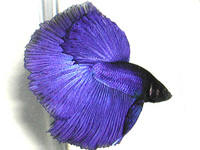
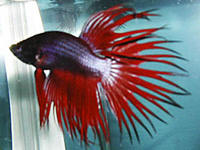
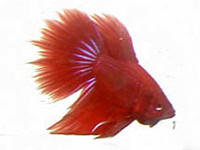 Extredsd
Extredsd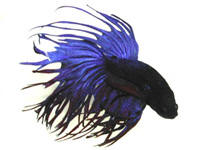 Giantddr
Giantddr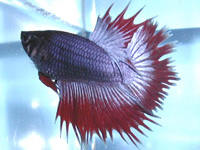
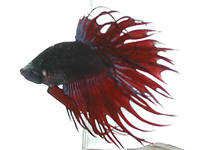 Thickck
Thickck 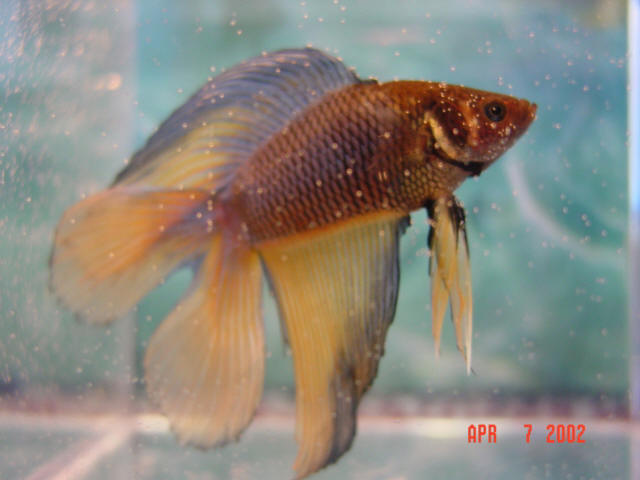
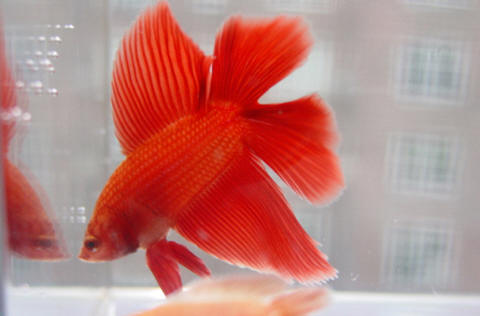
 Unknown spieces
Unknown spieces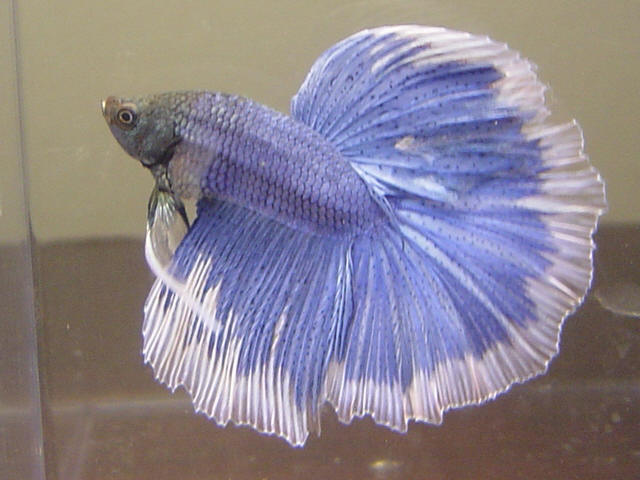
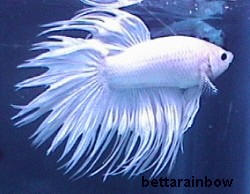

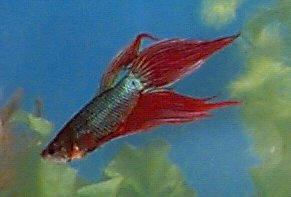
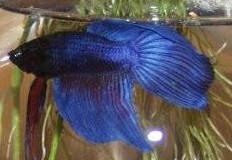

































No comments:
Post a Comment